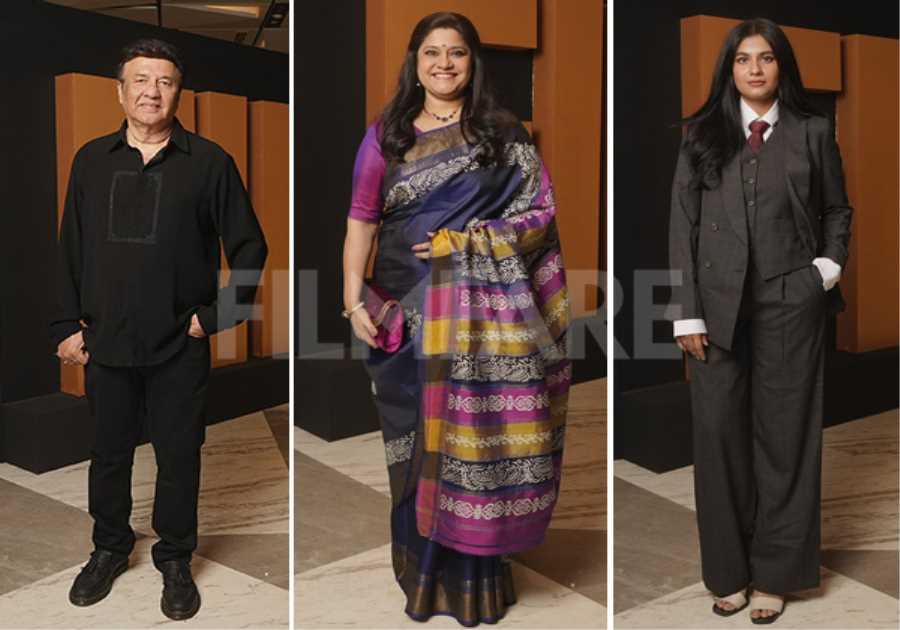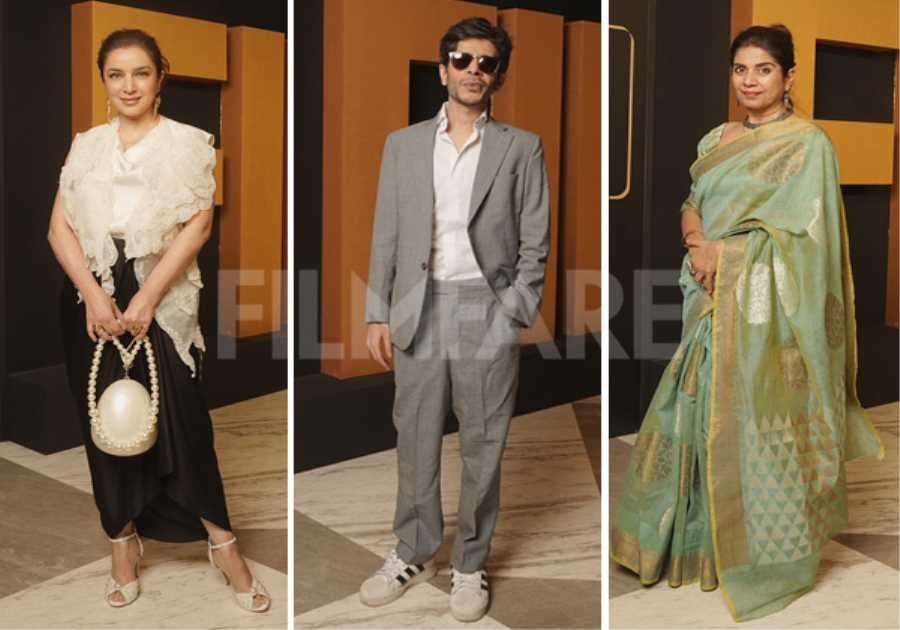Buying a dress shirt can be confusing, frustrating and time-consuming.
There are so many factors to take into consideration – fit, material, color and style. And after all that, how do you know if it looks good?
In today's article, we give you the 10 golden rules you need when it comes to buying this men's wardrobe staple. Read on to find out exactly how to buy the perfect dress shirt.
Rule #1 Differentiate Dress Shirts & Casual Shirts

To the untrained eye, the dress shirt and casual shirt look pretty much the same. But you're a man of style – so you need to know the difference!
Dress shirts are designed to be worn with a jacket and tie. They tend to have stiffer collars and cuffs and are generally made from 100% cotton. Dress shirts generally come in light, conservative colors like white and light blue. For the most part, dress shirts are unpatterned.
On the other hand, casual shirts are more likely to have patterns and details like pockets, contrasting stitching, and button-down collars. The casual shirt is designed to be worn without a tie so you'll find the second button is lower down – allowing the shirt to open more at the collar.
Men's Dress Shirt
- Plain, conservative colors
- Generally 100% cotton
- Designed to be worn with a tie
- Buttons are the same color as the shirt
- Longer (designed to be tucked in)
Men's Casual Shirt
- Brighter colors, often patterned
- Features like contrasting stitching
- Designed to be worn without a tie
- Variety of button colors
- Shorter (can be worn untucked)
Rule #2 Make Sure Your Shirt Fits
Ever wondered how to fix a floppy collar? Introducing the sponsor of today's article, Slick Collar – the shirt collar support solution that supports your shirt collar and placket, making your shirt collar stand up perfectly all day.
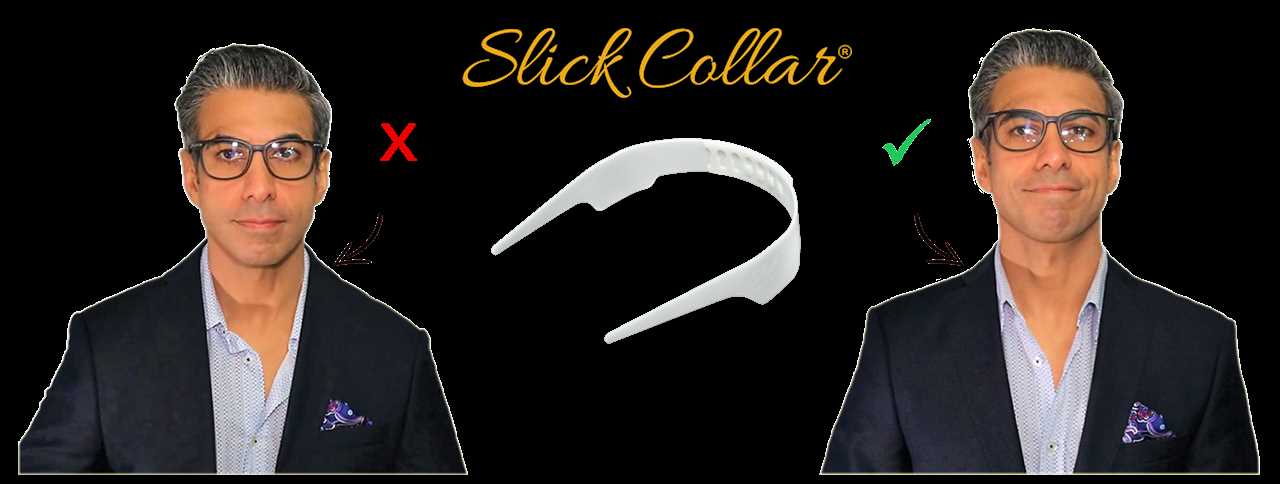
Click here to discover Slick Collar and get an exclusive RMRS deal!
Even a modestly-priced dress shirt can look like it was custom-made by a Savile Row tailor if you are able to nail the fit.
How do you know if a shirt fits?
Remember – your dress shirt is designed to be worn with a suit. So there's no point trying it on with jeans or chinos – or without a jacket!
With your shirt and suit on, check:
- Is ½-1 inch shirt cuff visible?
- Is ½-1 inch of shirt collar visible above your suit jacket collar?
- Do the shoulder points (seams) sit perfectly at the edge of your shoulder?
- Does the shirt follow your torso’s shape as it goes down? (Your shirt should not billow at the sides.)
- Can you raise your arms above your head without the shirt pulling or stretching, and becoming untucked?
- Can you fit a finger between the buttoned-up collar and your neck?
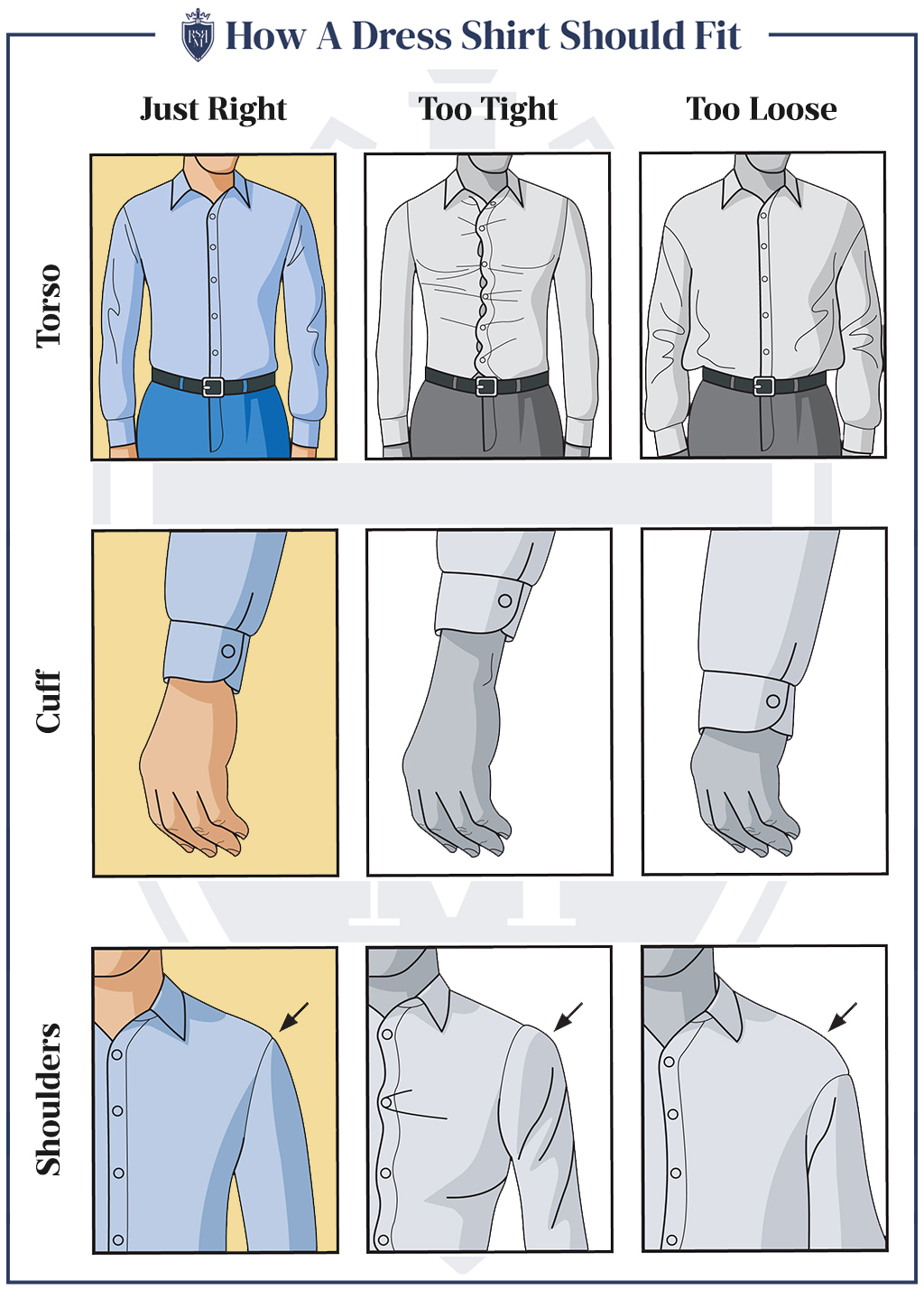
Putting in the time and finding a dress shirt that ticks all of these boxes will give you a shirt that is comfortable, practical and fits like a glove.
Rule #3 Tuck Your Shirt In (And Keep It Tucked)
There's nothing more frustrating than having your dress shirt come untucked throughout the day. An untucked or poorly tucked shirt looks sloppy and unprofessional.
How do I make sure my shirt stays tucked in?
- Buy a dress shirt that is a traditional length. Modern shirtmakers sometimes try to save money by shortening their dress shirts. How do you know if a shirt is the right length? Relative to your height, a quality dress shirt should end several inches below your beltline.
- Ensure that the bottom of a dress shirt has the classic, curved hem pictured above. A straight hem where the shirt ends in a perfectly horizontal line is an indication the shirt should be worn untucked (i.e. it's a casual shirt).

Rule #4 Keep Your Shirt Collar Straight
A dress shirt's collar should be crisp and straight. Floppy collars look sloppy and unprofessional.
But even a heavily starched collar will bend and deform at its points over time if not properly maintained. You need collar stays (also referred to as collar stiffeners or collar tabs). Look for a dress shirt with small sleeves on the inside of the collar where you can insert them.
Some shirts will come with thin plastic or stamped metal collar stays already in place. But guess what? They bend too!
Thick, premium, removable collar stays retain your collar's shape and keep it looking great for years to come.
How do I keep my collar standing up?
The answer lies in your shirt's placket – the part of your shirt where the buttonholes are located. A quality dress shirt will have a thicker placket which helps support your collar and keep it standing up.
If your shirt placket is made with a piece of thinner fabric, you'll find your collar sagging. This is because the weight of your collar pushes down on your shirt. All is not lost – you can use a shirt collar support to keep your collar exactly where you want it.
Rule #5 Choose The Right Shirt Fabric
The vast majority of dress shirts are made from 100% cotton or a blend of cotton and synthetic materials.
The story doesn't end there though.
There are a number of different ways cotton can be woven into fabric for dress shirts. Each has a different level of formality and unique qualities you need to be aware of.
Life is short so I have put together the most common fabrics for you here. I have started with the most formal and ended with the most casual:
- Poplin – Poplin has a smooth surface with a light, loose weave. The loose weave makes poplin ideal for spring and summer.
- Twill – A shimmery and diagonal weave. Opt for twill if you want a shirt with texture.
- Herringbone – A textured weave with distinct “V” shapes. Avoid multicolored weaves to keep this fabric formal. Herringbone is also a thick weave that lends itself well to fall and winter.
- Broadcloth – A poplin-esque dense weave that results in a real workhorse fabric. Men will appreciate the versatility and affordability of this fabric.
- Jacquard – A textured fabric with a complex look. It is often a premium-priced option best worn on less formal occasions.
- Pinpoint/Royal oxford – A smoother, lighter version of the casual oxford fabric that typically commands a high price.
- Oxford – A simple, sturdy weave with light bumps on its surface.
The best fabric for a dress shirt will depend on your office dress code and what you can afford. Also, ask yourself if you will be hot or cold at work and on your commute. Do you ride a subway warm from overcrowding to a baking hot office? Or do you drive an air-conditioned car to an icy office?
Rule #6 Understand Color, Stripes & Patterns
What color dress shirts should every man have?

Not all colors are made equally. A man starting out his dress shirt collection should aim for 80% of his shirts to be white, the most formal color, or light blue.
Once you have this foundation you are free to experiment with bolder colors, stripes and patterns. What colors would I recommend adding at this point?
- Off-white/Ivory (better complements the off-white teeth of caffeine addicts & smokers. Plus, these also look great with brown suits)
- Light pink
- French blue
- Lavender
Striped dress shirts
Striped shirts are more casual than solid shirts but there's a reason the New York Yankees wear them.
They mean business.
The general rule for striped dress shirts is the thinner the stripes, the more formal the shirt is.
There are four main styles of stripes on shirts. I have arranged them here from thinnest (most formal) to thickest (least formal):
- Pencil stripe
- Candy stripe
- Bengal stripe
- Awning stripe

TIP: Pattern on pattern rules for men's clothes can be difficult. As a general rule, whatever stripe or pattern you choose for a dress shirt should be a different size to any patterns you have in your suit and tie.
Patterned dress shirts
How about patterns? Patterns will always be less formal than solid colors or stripes.
Which pattern is more formal than which pattern though leaves some room for interpretation. I have ordered them here roughly from most formal to least formal but if in doubt use common sense. If you are wearing this shirt to the office does your boss or a co-worker wear the same pattern? If so, you are probably OK to proceed.
- Glen check
- Graph check
- Windowpane
- Houndstooth
- Gingham
- Madras
- Tattersall
- Shepherd’s check
- Dots
- Tartan/Floral/Paisley
Rule #7 Shirt Cuffs Matter More Than You Think
The cuff, along with a shirt's collar, is one of the only parts of a shirt visible underneath a suit jacket. That's why it's imperative to:
- Pay close attention to the details here.
- Understand the significance of each option.
How should dress shirt cuffs fit?
We have already covered the general fit of a dress shirt but here are some extra tips for this vital area:
- Does the cuff fit close to your arm and wrist while allowing a little room?
- Can you take off a dress shirt without unbuttoning the cuffs?
- Can you fit your watch under the cuffs?

What are the different types of cuffs?
There are 5 common types of dress shirt cuffs:
- Single cuffs
- Double cuffs (aka French cuffs)
- Convertible cuffs
- Barrel cuffs (aka button cuffs)
- Cocktail cuffs
Most menswear shops offer the single barrel (single-layered) button-up cuff as their standard option. This is adequate for the vast majority of business occasions but technically the least formal option.
The single barrel cuff will work best for men working in relaxed, creative fields such as marketing where a minimal dress code is sometimes still required for the benefit of clients.
Another option you might see is the double French cuff: this cuff style is how most men wear cufflinks on a dress shirt. This is a doubled-over cuff you fold over to create two layers. It fastens with cufflinks instead of buttons. This is a step up in formality and is a more unusual option that will separate you from the crowd. I recommend the double French cuff for men working in traditional fields like the finance sector, law and medicine.
Many other cuff options have existed historically but today you are unlikely to find them outside of the made-to-measure and bespoke shirting industries. If you do go down this route what else can be found?
There is the double-barrelled cuff which you fold over but fasten with buttons. There is also the single French which logically is single-layered and fastens with cufflinks.
Rule #8 Only Accept Perfection
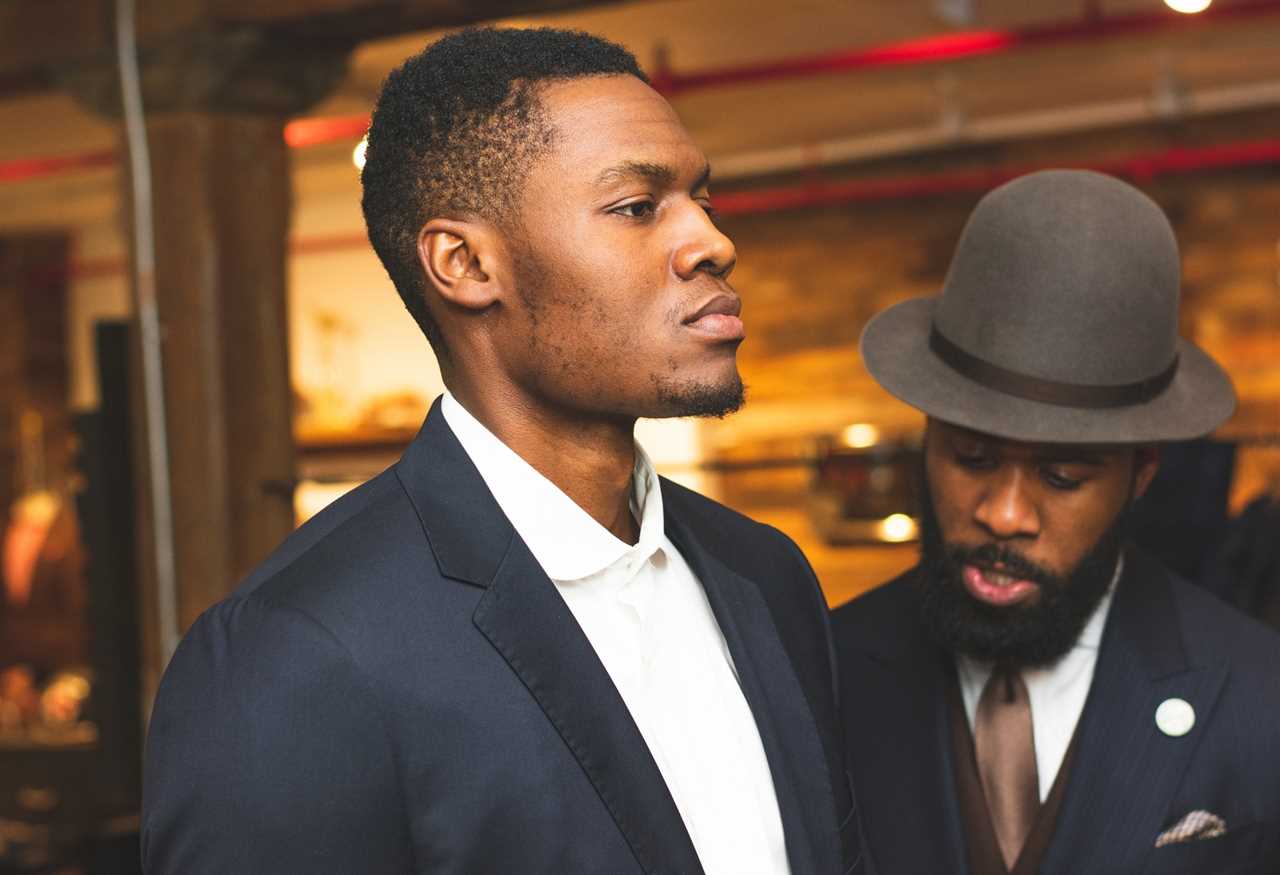
To wear a formal dress shirt is to look as smart as a man possibly can (barring a tuxedo or morning suit). As a result, there is no room for half measures.
No stains or wrinkles can be tolerated. Your dress shirts should be spotlessly clean. They should also be freshly ironed and pressed.
Watch out for your white dress shirts in particular yellowing with time and wear.
One of the first areas on a shirt to show signs of distress is the points of the collars. The collar is designed to touch the shirt (avoid a ‘hovering collar'!) so don't be alarmed. The collar rubbing slightly against the shirt is an inevitability.
A little wear and discoloration is practically invisible on a white dress shirt. But, let it go too far and it looks like you're wearing a historical artifact that belongs in a museum. It is time to find a replacement.
Rule #9 Don't Overlook The Details
Telling a shirt's quality at a glance is difficult even as a tailor myself. There are hallmarks of quality you can look for though that indicate a manufacturer is going the extra mile and is aiming to produce a high-quality garment. Here is what makes a quality men's shirt:
- High-density stitching: as many as 14 per inch, will give a dress shirt a longer lifespan.
- Single-needle side stitching: reduces wrinkling and makes a dress shirt look smoother.
- A split yoke on a shirt's back: balances uneven shoulder and helps the pattern on a shirt line up.
- Mother of pearl buttons: and their beautiful luster add a luxurious look.
- A slimmer top button better facilitates a tie: this puts less pressure on your neck.
- A shirt gusset: a small patch of fabric sewn onto the hem of a dress shirt that extends its lifespan by preventing it from tearing from the bottom upwards.
The more of these details you find on a shirt, the better its quality is. Use this to identify high-quality dress shirts that are worth the investment.
Rule #10 Frame Your Face

The collar on a shirt is designed to complement the proportions of your face and draw people's eyes up to it.
Once your collar is crisp and rigid with collar stays and a shirt collar support, it's time to decide what collar will frame your face best.
So, what is the best collar for a man's face shape? Just like when you are searching for sunglasses, look for a collar shape that is the opposite of your face shape. Avoid the ‘conehead' look of an angular, pointed face paired with a sharply-pointed collar.
If you are lucky enough to have an oval-shaped head there is virtually no style of collar that will look out of place on you.
A more angular face however requires a (less angular) spread collar. The rounded club collar pictured above would be a great match and help you stand out from the crowd.
Conversely, a more rounded face will look best with a pointed collar.
What about collar size? This is a factor most men completely neglect. A collar's size should be proportional to how large your head is. A larger head requires a larger, longer collar. A smaller head needs a smaller collar.
Nail the shape and size of your collar and you will immediately have a better-looking shirt than anyone else in the room.
Best shirt collar types for your face shape
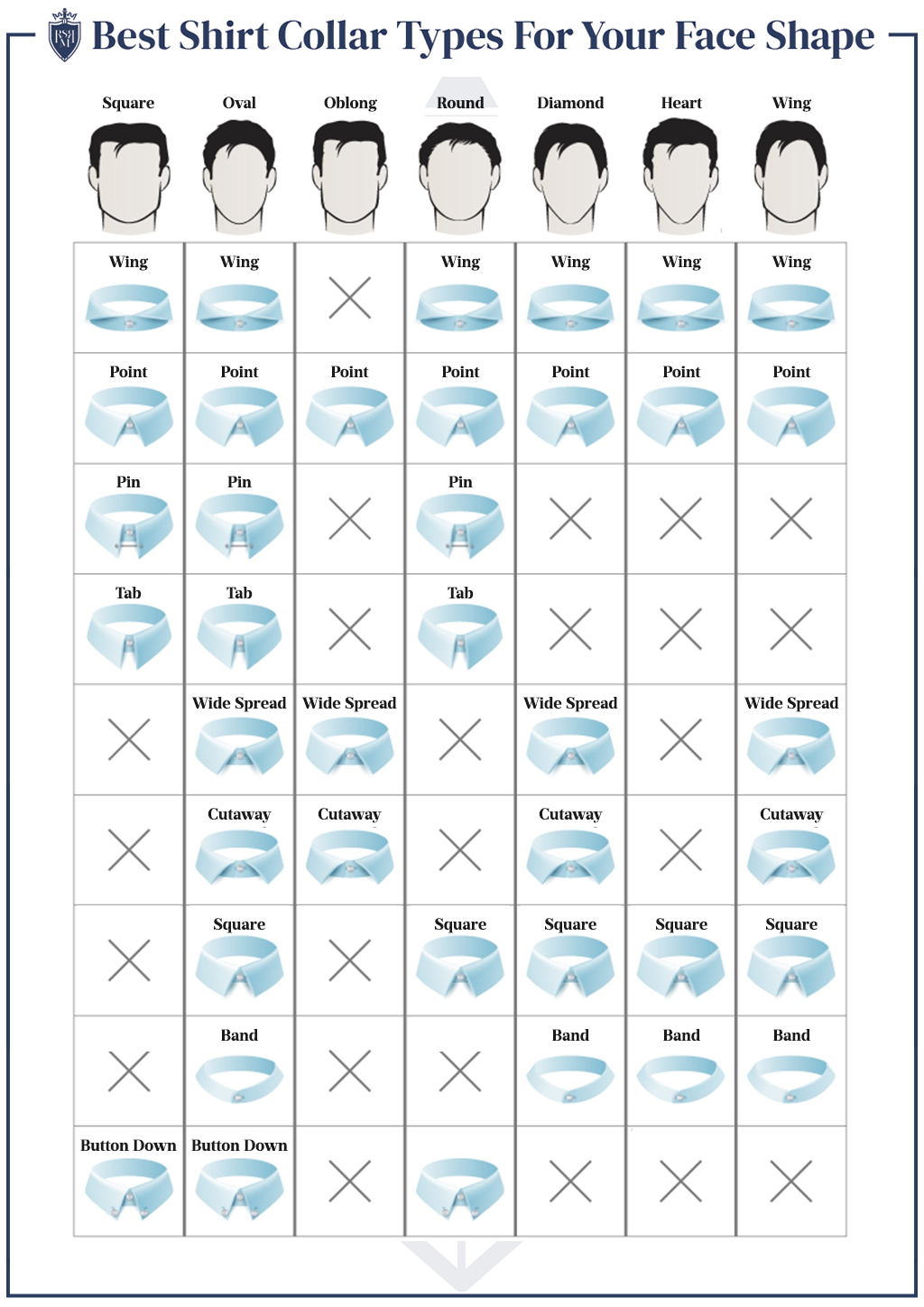
BONUS: Ditch That Shirt Pocket
This might be controversial for some but hear me out. When it comes to formality, less is more.
A shirt pocket is an extra detail most men don't need.
The pocket also makes a shirt harder to iron because creases can easily form around the stitching at the edge of the pocket.
Plus, even putting a small item in the pocket will pull down on your shirt and contorts its shape. This can easily detract from an otherwise flawless-looking shirt.
There is no rigid rule here but I recommend you compare shirts with and without a pocket. See which you prefer. You might well find yourself leaning towards the latter.
Gents, take these ten points to heart and it will be impossible to put a foot wrong when you are choosing your next dress shirt.
Click below to watch 10 Golden Rules To Buying The Perfect Dress Shirt:
The post How To Buy The Perfect Men’s Dress Shirt appeared first on Real Men Real Style.

-----------------------------------
By: Antonio
Title: How To Buy The Perfect Men’s Dress Shirt
Sourced From: feedproxy.google.com/~r/RealMenRealStyle/~3/8CYqtRQwOt4/
Published Date: Thu, 24 Jun 2021 11:55:00 +0000
Did you miss our previous article...
https://ballerawards.news/fashion/lowtech-kicks-why-the-humble-tennis-shoe-will-always-be-in-fashion


